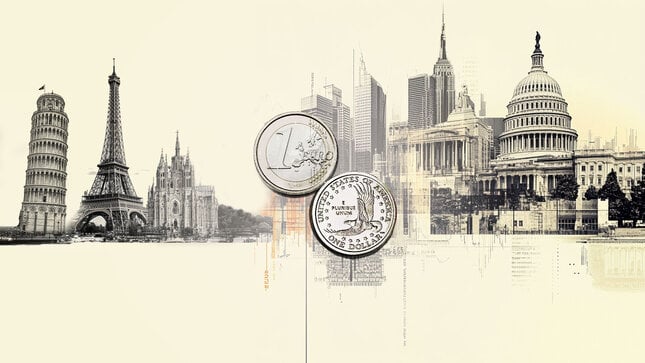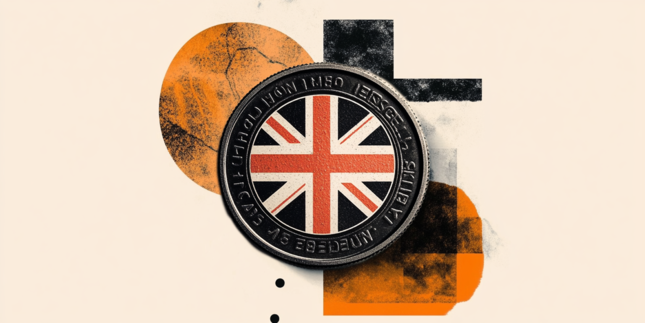Outlook
CPI today is expected at 2.6%, or maybe even 2.4%, from 2.9% last time out. MishTalk goes to some length to defend the 50 bp rate cut story by pointing out that with the drop in energy prices plus the drop in housing costs, it could well be a lot lower, even zero. For housing costs, Mish names owner-occupied rent guesses as well as new rentals.
Mish assumes that a low CPI reading means the Fed will be motivated to cut rates by the big 50 bp because it means recession is already here.
Three things: what’s the difference between a soft landing and near-recession? Only the Fed has that definition, if one exists.
Secondly, inflation moves with very long lags. We can easily argue that only now are we coming out of the weird post-pandemic period when used car prices rose to ridiculous levels, along with existing home prices. A drop back down in many of these headline prices was only to be expected, given they had overshot to the upside.
But sticky prices do still exist. See the chart from the Atlanta Fed. The sticky price metric rose 3.2% annualized in July—from 2.6% in June. It was up 4.1% y/y. “On a core basis (excluding food and energy), the sticky-price index rose 3.2 percent (annualized) in July, and its 12-month percent change was 4.2 percent.“ We await updates but whatever they are, they are not going to near zero.
It’s only when you remove food, energy and shelter that sticky prices slide down to a mere 0.77%. See the chart from FRED. But the FOMC does not exclude those sectors!
And finally, a survey of occasions when the Fed did 50 bp cuts instead of the more usual 25 bp indicates it takes a crisis, or at least a crisis mentality—at the Fed. Granted, the Fed perceives “crisis” in part from general market behavior, as in the case of the DotCom Bust or the 2008-09 Meltdown. But it also has common sense. A 50 bp cut would signal “crisis” when we do not have one. The Fed is unlikely to promote the idea of “crisis” when the majority already think there isn’t one.
Reuters offers an interesting comment on the upcoming rate cuts, noting that if a 5% rise in interest rates failed to rein in a robust economy, why should we expect cuts to have much of an effect, either?
“One of the puzzles of the past two years has been how five percentage points of tightening by the Federal Reserve between March 2022 and July 2023 had so little effect on the overall economy.
“Despite the borrowing squeeze, U.S. real GDP has clocked annualized growth rates in excess of 2% in seven of the eight quarters since the middle of 2022 - and is on course to add to that tally in the three months through the end of September…. And for all its seasonal wobbles, the stock market is close to record highs.
“This suggests that the economy has become increasingly desensitized to changes in short-term borrowing costs. If that is the case, then policymakers should be anxious that any slowdown from here - or even a cyclical recession - might also be inured to monetary policy easing.”
Forecast
We got a smallish pullback Tuesday that is developing more today, wiping out some of the gains over the past three days. This position adjustment implies a breakout once the inflation data comes out, but which way?
As Bloomberg points out, “US consumer prices probably climbed in August at the slowest pace in more than three years. The figures due on Wednesday are also expected to show a measure of core price gains that excludes food and energy held at the same pace as in July. The question for Federal Reserve policymakers is whether the data would prompt them to stick with a quarter-point interest-rate cut, or opt for a half-point reduction. Traders are fully pricing a smaller cut…” but you never know.
This could be an occasion when the absence of a crisis does not prevent the Fed from cutting by 50 bp. It ain’t over yet. If that viewpoint catches fire, the dollar is toast again.
Political Tidbit: The presidential debate was torture to watch. Harris had Trump in a defensive, petulant crouch most of the time. Trump told numerous lies, including one we hadn’t heard before (people eating cats and dogs) and got called out several times by the moderators.
Nobody but a dyed-in-the-wool, never-leave Republican could think Trump had won—and yet the after-debate focus groups had not very bright people saying they will vote for the creep. The first CNN survey had Harris the winner by 67-33%. Trump himself went to a post-debate spin room and told the camera his polls showed he had won by 90%, a laughable lie even only because no polls had come out so fast. The TV commentary was fascinating and lots of people didn’t get enough sleep. CNN and MSNBC hosts were jubilant over the Harris performance and scathing about Trump, while Fox had the reverse.
This is an excerpt from “The Rockefeller Morning Briefing,” which is far larger (about 10 pages). The Briefing has been published every day for over 25 years and represents experienced analysis and insight. The report offers deep background and is not intended to guide FX trading. Rockefeller produces other reports (in spot and futures) for trading purposes.
To get a two-week trial of the full reports plus traders advice for only $3.95. Click here!
This morning FX briefing is an information service, not a trading system. All trade recommendations are included in the afternoon report.
Recommended Content
Editors’ Picks

EUR/USD accelerates losses to 1.0930 on stronger Dollar
The US Dollar's recovery regains extra impulse sending the US Dollar Index to fresh highs and relegating EUR/USD to navigate the area of daily troughs around 1.0930 in the latter part of Friday's session.

GBP/USD plummets to four-week lows near 1.2850
The US Dollar's rebound keep gathering steam and now sends GBP/USD to the area of multi-week lows in the 1.2850 region amid the broad-based pullback in the risk-associated universe.

Gold trades on the back foot, flirts with $3,000
Gold prices are accelerating their daily decline, steadily approaching the critical $3,000 per troy ounce mark as the Greenback's rebound gains extra momentum and US yields tighten their retracement.

Can Maker break $1,450 hurdle as whales launch buying spree?
Maker holds steadily above $1,250 support as a whale scoops $1.21 million worth of MKR. Addresses with a 100k to 1 million MKR balance now account for 24.27% of Maker’s total supply. Maker battles a bear flag pattern as bulls gather for an epic weekend move.

Strategic implications of “Liberation Day”
Liberation Day in the United States came with extremely protectionist and inward-looking tariff policy aimed at just about all U.S. trading partners. In this report, we outline some of the more strategic implications of Liberation Day and developments we will be paying close attention to going forward.

The Best brokers to trade EUR/USD
SPONSORED Discover the top brokers for trading EUR/USD in 2025. Our list features brokers with competitive spreads, fast execution, and powerful platforms. Whether you're a beginner or an expert, find the right partner to navigate the dynamic Forex market.